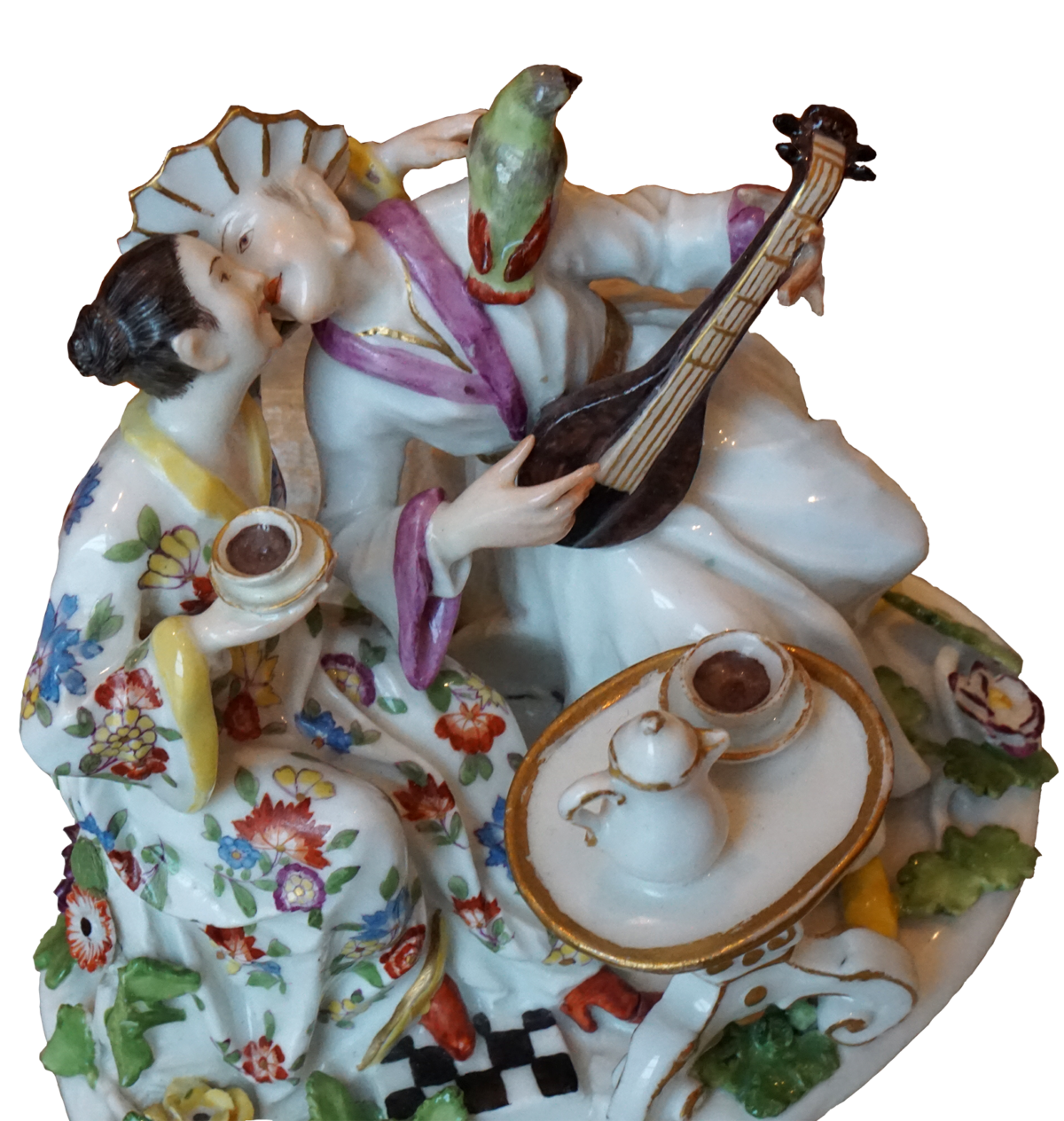“Indian lovers”

Model by Johann Joachim Kändler, Royal Polish and Electoral Saxon Porcelain Manufactory, Meissen, Germany, around 1745, Porcelain.
Courtesy of Johann Jacobs Museum
The cheerful scene in the courtly ambience throws a spotlight on the global imagination around 1750: the lute and chessboard come from the Arab world, the coffee in the cup from Africa or the Caribbean, the parrot from South America. The “Indian” flowers on the woman’s dress are from Japan, just as the garb of the two in general makes one think of kimonos and East Asia. When this sculpture was formed, the transatlantic triangular trade was in full swing. Are the enormous privileges enjoyed by the lovers to be regarded naively? In other words, what else would need to be shown next to the rococo sculpture for the whole picture to emerge?